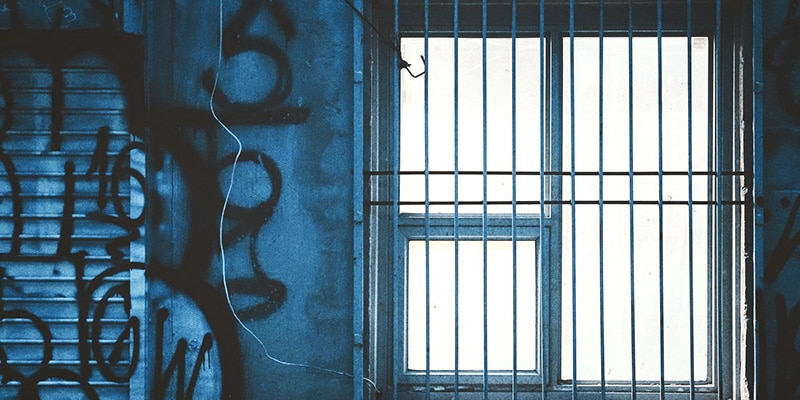
As Gangs Evolve, So Should How We Classify Them

As a collective, most of what we will talk about will fall under the category of Organized Crime Groups. This one term covers most of what we deal with today in regards to Street/Prison Gangs, Cartels, Crime Families, and Mafia Families just to name a few. They all have very common group identifiers and characteristics that would allow them to fall under this Organized Crime Group umbrella. One such characteristic is a basic organizational structure which is normally hierarchically organized (top-down). Some crime groups are loosely structured including smaller subsets, while others, like mafia families and cartels, are very structured and manage the organizational chart to ensure strong adherence to authority within the organization.
Another characteristic is that these organized groups’ main reason for existence is profits by every means, using terror and corruption to achieve their goals. The extraordinary amount of money they obtain from both their illegal and legitimate activities makes them an actual threat not only in the US but internationally. Common criminal activities fall into 3 main categories:
- racketeering, extortion, kidnapping, coercive protection, and debt-collecting;
- illegal services, consisting of providing anything usually prohibited, regulated, or taxed by law (drugs, smuggling, gambling, prostitution, pornography, migrants, and manpower);
- financial crime, counterfeiting, fraud, and computer crime.
The most common names for these criminal groups (as defined by Wikipedia) are:
Gang is a group or society of associates, friends, or members of a family with a defined leadership and internal organization that identifies with or claims control over territory in a community and engages, either individually or collectively, in illegal, and possibly violent, behavior. (1) Other gang groups include Prison, Street, and Outlaw Motorcycle.
Mafia (or Mob) is an informal term that is used to describe criminal organizations that bear a strong similarity to the Sicilian Mafia. The central activity of such an organization would be the arbitration of disputes between criminals as well as the organization and enforcement of illicit agreements between criminals through the use of or threat of violence. Mafias often engage in secondary activities such as gambling, loan sharking, drug trafficking, prostitution, and fraud. (2)
Crime Syndicates is a loose affiliation of gangsters in charge of organized criminal activities. Law enforcement often classifies larger forms of financial collusion as criminal syndicates. (3)
A crime family is a unit of an organized crime syndicate, particularly in Italian organized crime (and especially in the Sicilian Mafia and Italian-American Mafia), often operating within a specific geographic territory or a specific set of activities. In its strictest sense, a family (or clan) is a criminal gang, operating either on a unitary basis or as an organized collection of smaller gangs (e.g., cells, factions, crews, etc.). (4)
Drug Cartel is a criminal organization with the intention of supplying drug trafficking operations. Now popularly used to refer to any criminal narcotics-related organization. (5)
Some criminal organizations, such as terrorist groups, rebel forces, and separatists, are known to be politically motivated.
While the above touches on the most common groups, these names listed are just a small set of reference points for Organized Crime Groups. We have all heard of most of these and have probably grouped them all into similar buckets in the past. However, how do law enforcement personnel and crime analysts keep track of these separate types of groups? More importantly, how do they keep track of the individuals who belong to these organized groups? Are there easy ways to associate individuals to organizations and to specific incidents and specific crimes? Can someone easily pull up a list of associates under one of these organized groups?
If this is a challenge for you or your team, we may have a solution. IntelScope. IntelScope is a criminal intelligence database that helps capture, analyze, search and share intelligence on individuals, and any organized crime group.
IntelScope acts as a first-tier, internal database that manages data on known and suspected criminals. Data is collected per incident and can include gang qualifiers, associations, acquaintances (points of contact), witnesses, vehicles, addresses, images, and documents. IntelScope’s collection of detailed information aids in investigations, analysis and ultimately solving crime.
GangScope™ is an intelligence database that helps capture, analyze, search and share intelligence on criminals, gangs, and more. GangScope acts as a first-tier, internal database that manages data on known and suspected criminals and gang members. Intelligence is collected per incident and can include qualifiers, associates, acquaintances (points of contact), witnesses, images, and documents. GangScope’s collection of detailed information aids in investigations, analysis and ultimately solving crime. The software complies with standards outlined by federal (28 CFR) policies. While complying with standards, GangScope™ boasts usability through simple yet extensive data mining via search, reports, profiles, and watches.
The overall goal of GangScope™ is to provide law enforcement personnel/ crime analysts/ correctional officers/prosecutors with maximum data through a friendly user interface while remaining cost-effective. A non-gang version – IntelScope is also available if needed.
*A non-gang version is also available if needed.
To learn more or to schedule a full demo of our system – request a demo here. We would welcome the opportunity to show you how Gangscope can help your department organize and store your data in a secure and compliant way.
The GangScope Team

